A building has 2 great enemies, the first is obviously time, during its passing all other elements take their toll on the building, and the other, sometimes far greater, is war. War brings an unprecedented amount of destruction, and in its whirlwind lives, culture, and civilization are sometimes lost. World War 2 saw destruction on a massive scale and some buildings of great historical and cultural importance were lost during 1939-1945, especially in Europe where the conflict raged within urban centers. Five buildings destroyed during WW2 now rebuilt are standing against you today, all iconic, all masterpieces.
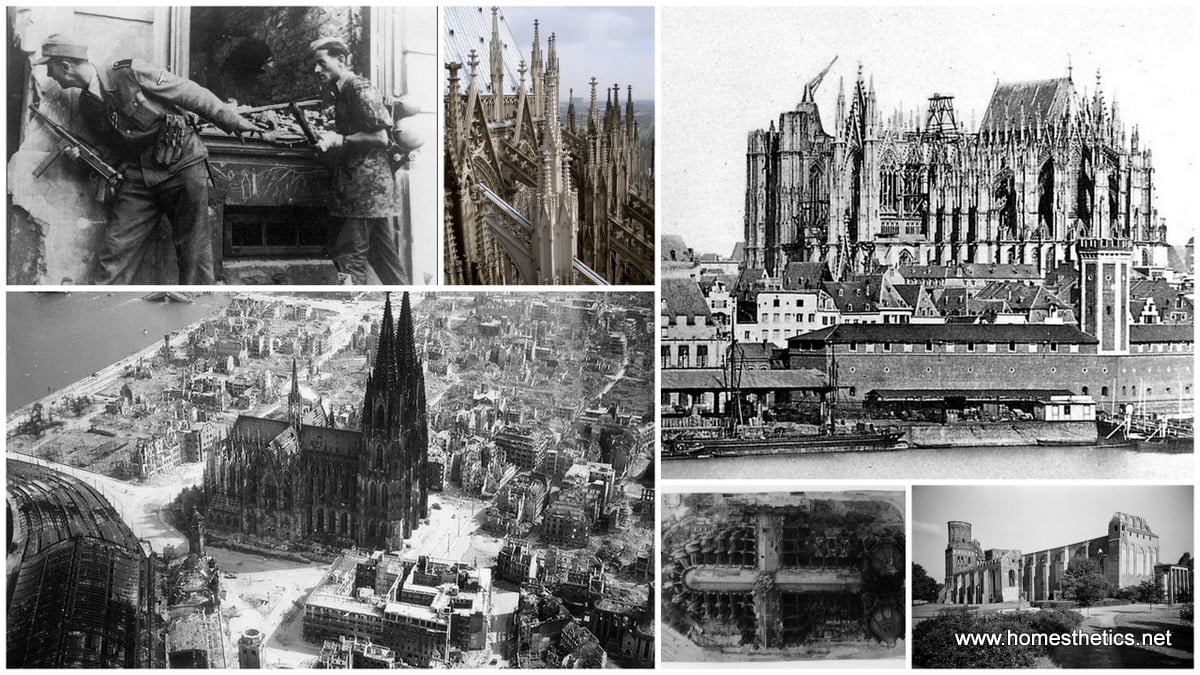
It took a great effort and time to rebuild these lost monuments after the war, so that their story and heritage may be preserved for future generations. To understand why they were rebuilt, one only needs to take a look at the building, know its story of how it came to be, and especially how it came to an apparent end during World War 2.
Rebuilt Buildings Destroyed During WW2
1. The Benedictine Abbey on Monte Cassino
A famous topic during late 1943 and early 1944 was the battle of Monte Cassino. The Allies were fighting a desperate battle to break the Gustav Line and in order to gain access to the road to Rome the town of Cassino had to fall. Located on top of Monte Cassino was a benedictine monastery that was there from 529 A.D. The monastery was rebuilt and refurbished throughout the ages so that by 1944 it looked like during its last great renovation in 1505 but you could still see elements of early Romanesque architecture of the early 11th century. Most of the details were late Renaissance and the abbey also held a collection of Renaissance art, paintings mostly.
And so it came that a fierce battle was to be fought in and around the place where the Benedictine order formed and built its first monastery. Located atop the hill that dominated the valley below and the town it became a strategic position. The German Xth army moved to occupy and defend the town and hill which controlled access to the Liri valley. After two consecutive battles, American forces failed to take the hill which was defended by elements of the German Xth army. After the American and free-french troops failed to take the hill, New Zealand's 2nd division and 4th Indian division were brought in to help in the struggle.
The destruction of the monastery came in the end because it happened to be there. It was directly on top of the hill and provided German forces with an intact structure that could have been used as a fortress to hold the hill. The bombing of the abbey was a difficult decision since most of the enemy fire came from the slopes below the monastery. The Xiv Panzer Corps and the German 1st Parachute Division were present on the lower slopes of the hill leading into the town and the town of Cassino itself but had not entered the monastery. Not knowing this every divisional commander on the spot recommended that the monastery should be bombed, opposed to this was Mark Clark, the commander of the U.S. Fifth Army but under great pressure, Marshal Harold Alexander the commander of the entire Mediterranean Theater sided with Freyberg, and the commanders in the field and the bombing run was going to happen.
On February 15 1944 some 229 medium and heavy bombers bombed the abbey with about 1000 tons of high explosive and incendiary bombs. The monastery was turned to rubble, and the church was utterly destroyed, but some walls and some parts of the abbey were still standing. Since the abbey was built to sustain a siege, like most medieval monasteries, it was left a ruin that now could be occupied by German forces.
The bombing was a blunder not just because it destroyed an abbey that stood there for over 1000 years but also because it killed many civilians who hid inside to escape the battle in the town. Ironically, as long as the abbey was intact, the German forces did not enter it because it was being occupied by the Benedictine monks and would not want to upset the Holy See. Now that the monks were gone, the bombing did the exact opposite because German paratroopers moved inside the abbey and turned the rubble into a fortress and observation point, which was what the Allies were trying to prevent in the first place.
The abbey was rebuilt and reconsecrated in 1964, most of its art collection and library was saved before the battle, and the Panzer Division Herman Goering helped transfer the collections to the Vatican at the start of the battle. The abbey itself had witnessed and survived many moments of Italian history, the Italian wars, French revolutionary wars, the Italian unification, and so on. It was also one of the few monasteries of the 11th century renovated in a renaissance style. The cloister was completely redone with classical elements, columns, and statues. The arches were made cylindrical to correspond to the Renaissance notion of balance and symmetry. This new Renaissance look can be seen on the outside facades of the living quarters where windows are arranged in order to gain a symmetrical effect. The lower floor begins with the arched ways then continues with smaller windows as you go up towards the roof, opening the lower floors towards the inner courtyards. The facades towards the exterior contain some mannerist features like bricked-in archways, made only to respect the symmetrical rule applied on other facades where the archways are actually windows.
The monument stands today and is a symbol of man's enduring will to preserve the heritage of his world.

image via www.abroadintheyard.com
the monastery before and after the bombing
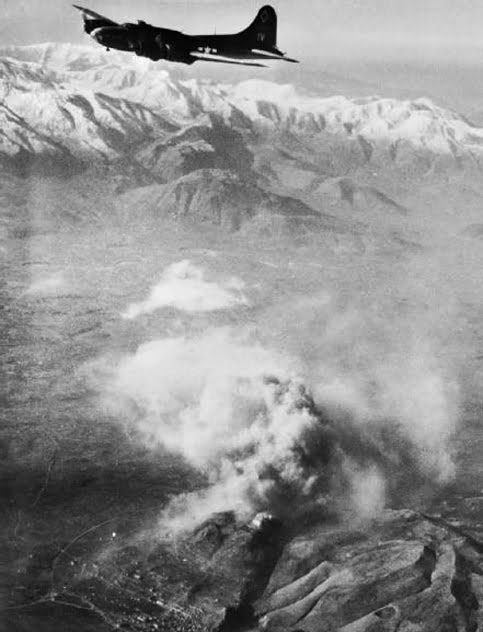
B-17 over the abbey on the first bombing wave.
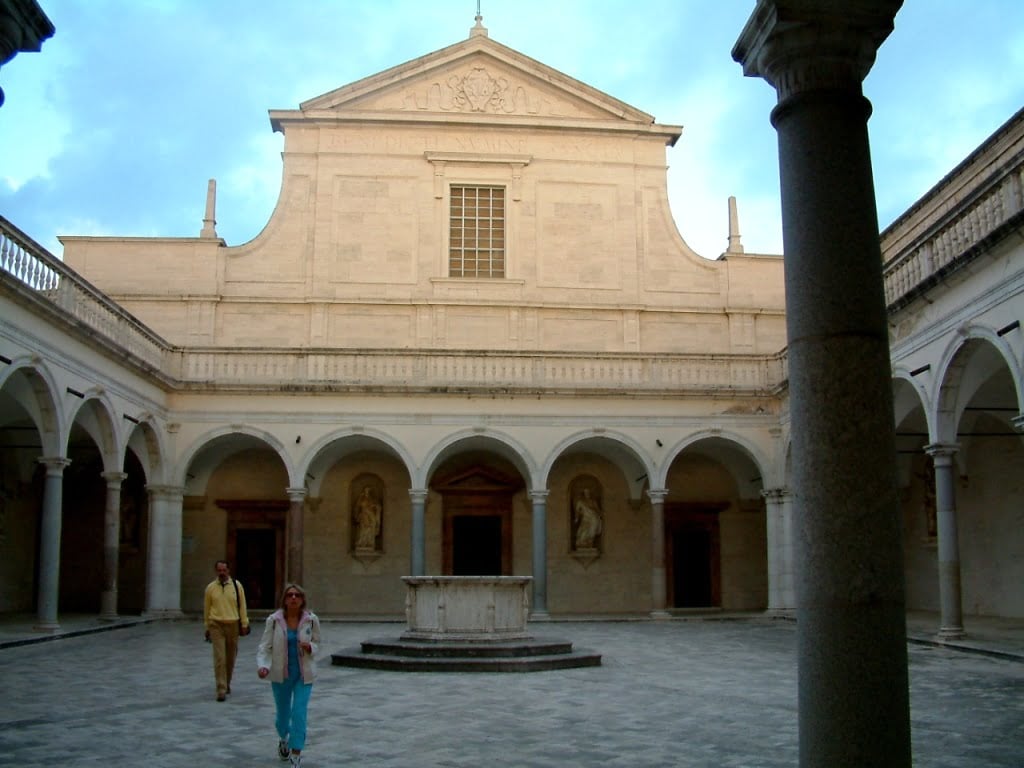
The inner courtyard as it appears today after restoration

The Facades face down-hill, and the Renaissance elements are visible in the tendency for symmetry and use of arches.
2. Cologne Cathedral
While not entirely wiped out, it took 14 direct hits that severely damaged the interior and completely burned the rooftop. Unlike the previous example, no major battle was fought on the spot but rather the city was in the way of the Allied strategic bombing waves. When America entered the war, it became possible for the Allies to bomb German towns around the clock. The British, due to high attrition of bombing runs during the day decided on bombing German towns at night, while USAF's mighty Eight Air Force would bomb the towns by day. And so Cologne would be in for a 24-hour bombing run whenever it was possible.
Strategic bombing was thought to have different effects and goals by the RAF and the USAF. The RAF Bomber Command wanted payback for the Blitz, so it hoped that besides factories its bombs would lower morale so low it might affect the "home front" and if they couldn't kill the workers in the factory by day why not in his sleep with minimum aircraft loss by night. USAF believed back then as they do today in precision bombing of key industrial targets because even during the day the scatter area for bombs was several miles so at night RAF could only hope to hit the urban centers and hit a precise target at night was very difficult if not impossible by heavy bombers. USAF also aimed to draw the Luftwaffe into an air superiority battle over Germany in order to achieve complete air superiority and also target the air industry thus defeating the Luftwaffe in the air and crippling its resources in materiel and airplanes.
Cologne like many other German towns was a major railroad hub and industrial center so RAF decided to begin its night bombing campaign here. Hamburg was selected first but due to weather the target shifted towards Cologne and Arthur Harris wanted to put 1000 airplanes over the town and raze it. In one of the biggest air raids RAF dropped some 2000 tons of explosives over Cologne, German reports showed only 36 factories were hit but 45 000 were left homeless and 469 people were killed. Cologne would be bombed several times by the RAF during the night and by the USAF as a target of opportunity during the day. So bad was the destruction wrought upon Cologne that the city looked like a ruin from a past age. During the raids, bombs also hit the cathedral, and by 1945 only the 400-year-old Gothic structure stood up in defiance, as its spires were the only standing structure in Cologne left.
The cathedral was a masterpiece of medieval Gothic architecture, began in 1248 and most of it was completed by 1473 when construction was halted. In the late 19th century, work was completed after the original plans with spires being added at last. It presents a mix of mid to late Gothic details, visible especially in the buttresses and the pinnacles on the buttresses and arches. Though made to resemble the Amiens Cathedral the plan is typical of all Gothic cathedrals, a Latin cross with a large area for the choir. The structure is again typical for Gothic Cathedrals using the famous Gothic ogival system of pillars and flying buttresses. In the late 19th century a surge or romanticism brought forward a desire for Neo-Gothic architecture and the renovations of medieval monuments and buildings, so that by 1880 work began on the Cologne Cathedral to restore it and give it its spires.
Even if it did sustain bombing, the roof was partially destroyed and much of the glass was broken but the structure was standing. This was in part due to the fact that the church itself was not a target but rather the very nearby train station which took most of the bombs. By the end of the war one final battle was being fought in front of the cathedral, since the city was stormed by Allied troops, several German units made a last stand. One of these minor battles was a tank battle in front of the Cathedral.
It was repaired and the interior was completely renovated by 1956. But it was in 2007 when the hasty repairs made in 1944 were removed and proper repair was done to make the cathedral look like the pre-war image was of this now UNESCO world heritage monument.

image via german-architecture.info
The Cathedral during its renovation in the late 19th century
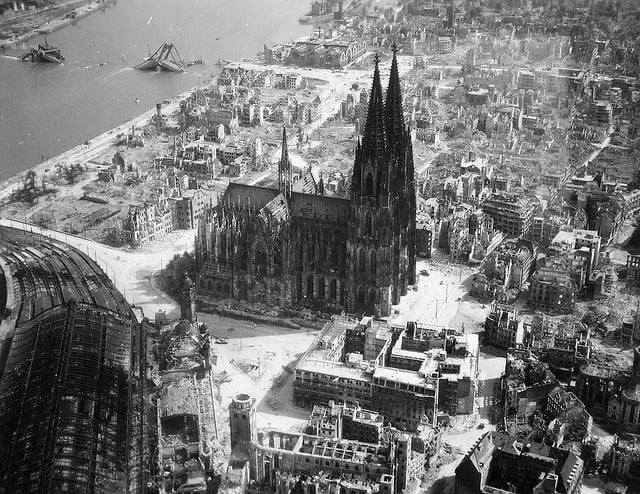
image via german-architecture.info
Left standing among the ruins of the city
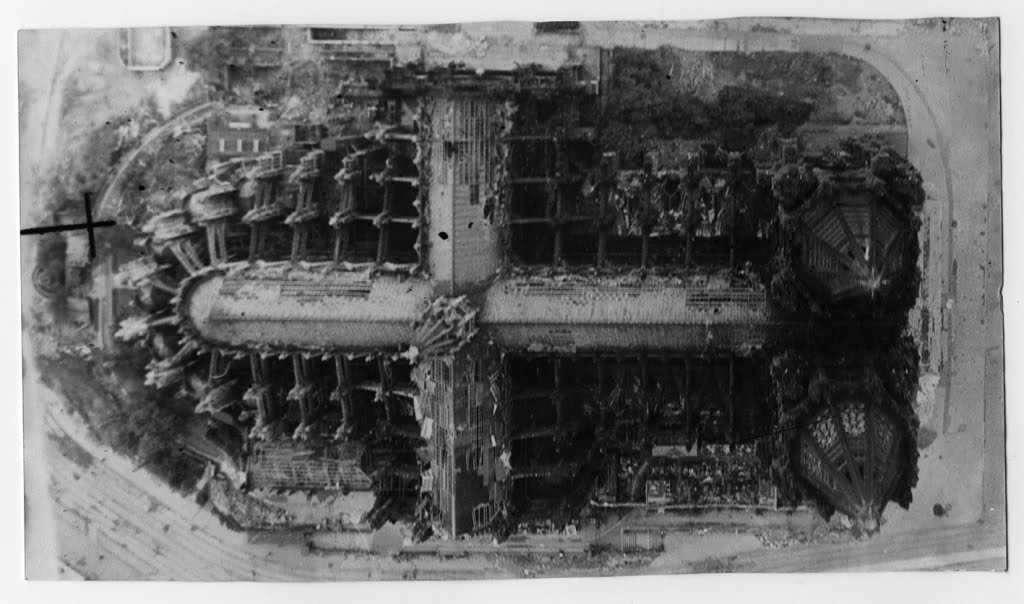
image via 75nzsquadron.wordpress.com
Aerial photograph of the Cathedral and the damage done to the roof.
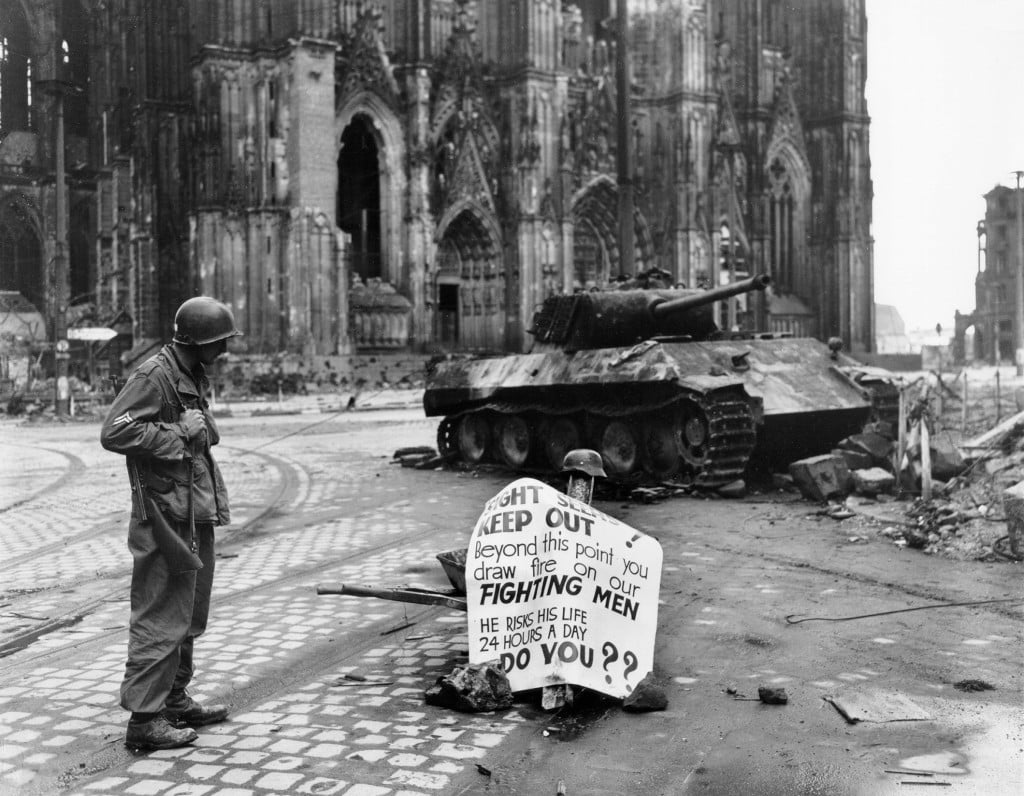
image via wikipedia.org
Remains of the short tank battle which took place in front of the Cathedral, note the knock-out Panther tank and damage done to the Gothic details of the Cathedral.
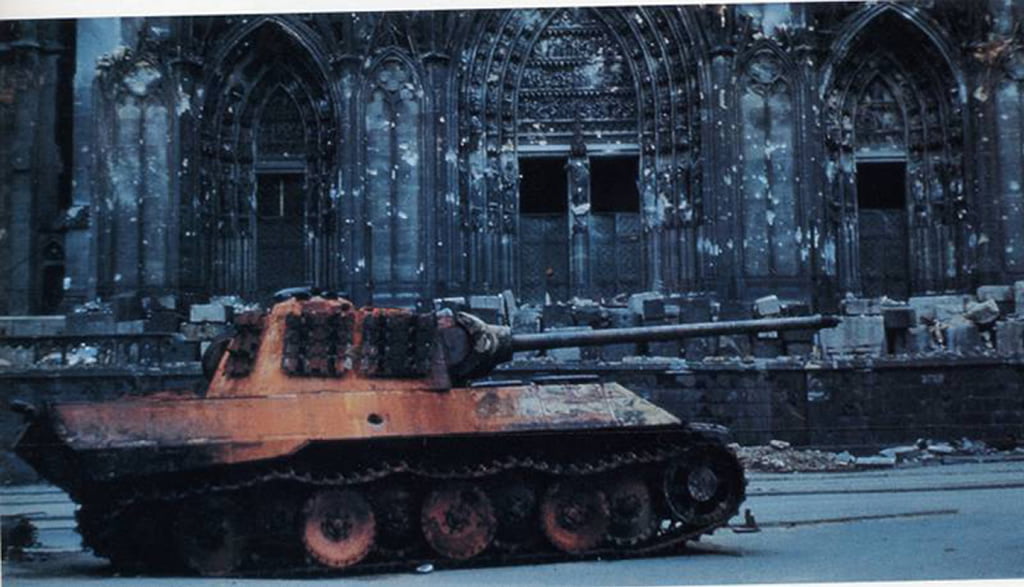
Remains of the battle that took place right in front of the Cathedral; note the bullet-riddled facade of the Cathedral in the background.
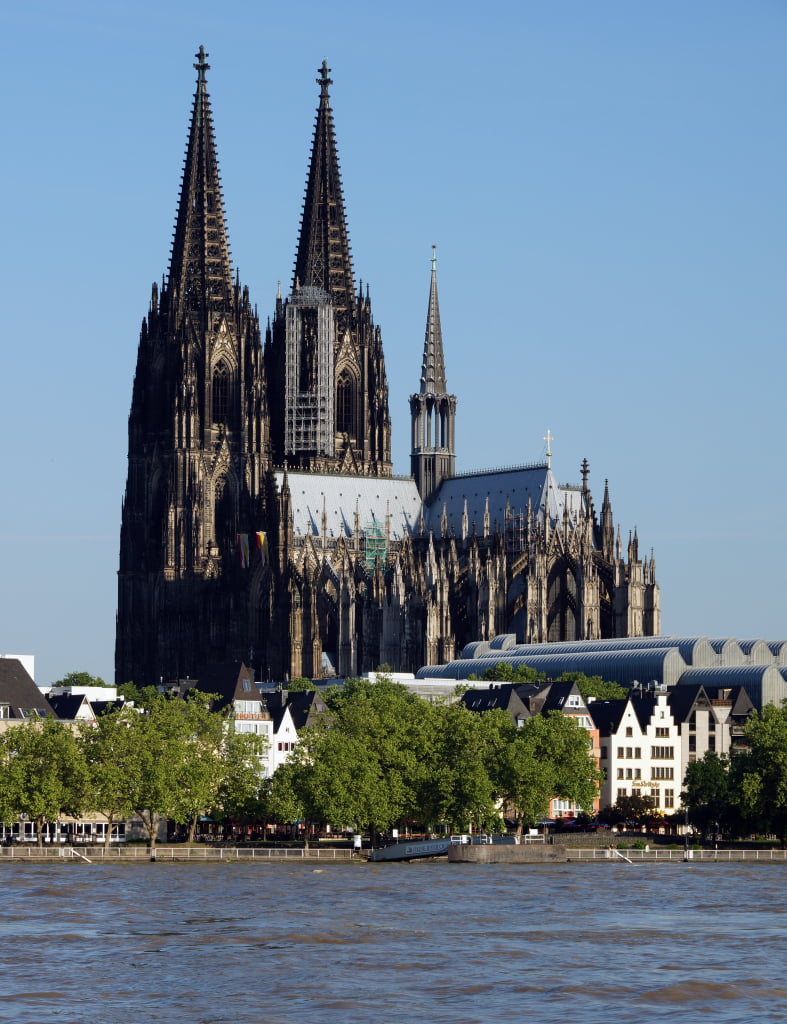
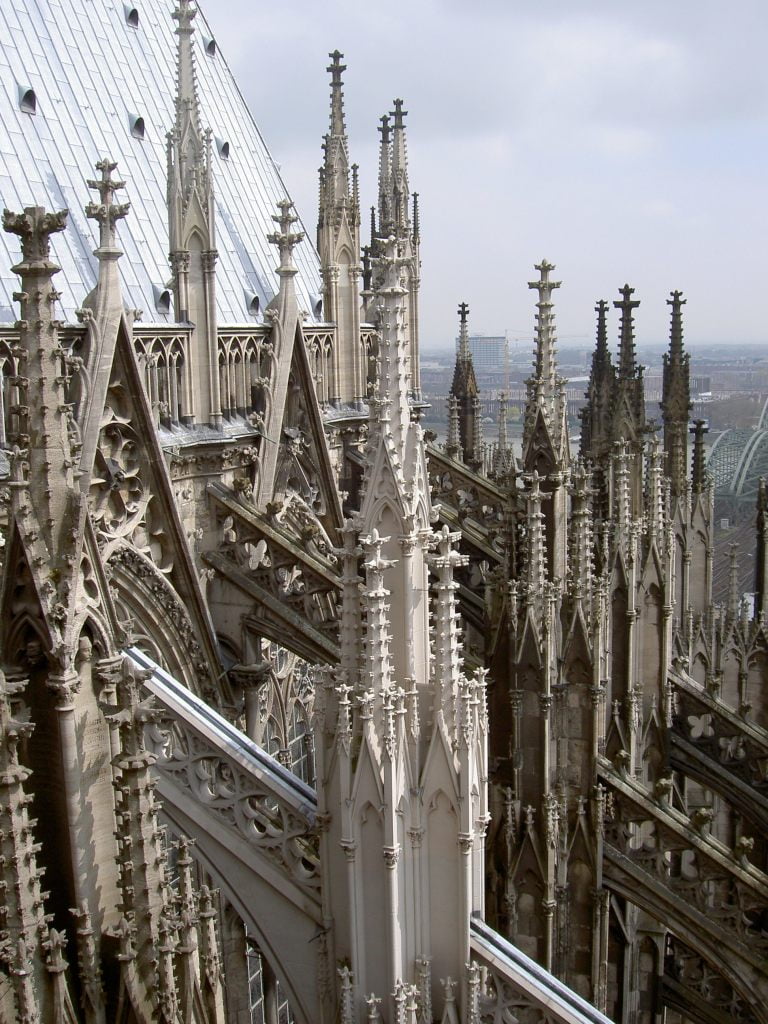

image via wikipedia.org
The restored Cologne Cathedral, exterior: spires and flying buttresses with gothic details and interior view of the ogive structure system.
3. The Konigsberg Cathedral
Konigsberg was for a long time under Prussian rule and the main city of the Kingdom of Prussia and capital of East Prussia, and today that city is named Kaliningrad and is part of the Russian Federation. The town contained a number of landmarks and was one of the most picturesque towns in Eastern Europe. It combined Gothic architecture and late influences of baroque, and it also contained a unique Gothic church built in red brick as most northern castles fortifications churches and abbeys are in northern Europe, especially in Poland and the Baltic States. Such designs are reminiscent of buildings and castles like the ones in Thorn, Marienburg, or Brest. Brick was extensively used in northern Europe and because of this building material towns and castles of medieval northeastern Europe have a unique look. By 1333 the Gothic current arrived in this corner of Europe but the construction of an ogive system with pillars, vaulted arches, and flying buttresses was made increasingly difficult by the absence of solid stone and the widespread use of bricks. However, the task of making the cathedral was accomplished by the late 14th century and the result was a huge Basilical type Gothic church. Even more unique was how the structure was adapted to use wooden beams and simulate the ogival system on the inside, and was a true Gothic cathedral complete with the western towers or wertwerk. Later additions included Baroque decorations on the tombs of Duke Albert of Prussia and on the altar. The Cathedral itself was an image of the architectural preferences of the Germanic culture in north-eastern Europe and one of many landmarks within Konigsberg unique through its local interpretation of European architectural currents.
But, as before, World War 2 came, and the city was first bombed by the Soviets but the damage to it was moderate and the damage to civilian infrastructure and the industrial capacity within the city was light. The Royal Air Forces decided to support soviet forces and bomb, late in the war, the city with some 200 Avro Lancasters. Needless to say, the damage done was high, but by August 1944 when the raid took place, the Russians were pushing the front into East Prussia. By January 1945 3rd Panzer army was trapped inside the city and completely encircled by the 3rd Belorussian Front. As if the bombing wasn't enough, Hitler declared the city a Festung, meaning every man of the 3rd Panzer Army would fight to the last proverbial round of ammunition, the battle moving slowly from the outskirts of the town towards the center destroying the urban center entirely and with it the castle and the Cathedral.
The city was rebuilt as Kalinin but not the Cathedral, the soviet regime turned the area into a park and left the cathedral a burnt-out shell until the Soviet Union collapsed. Then in late 1994 work began on rebuilding it to its current state.
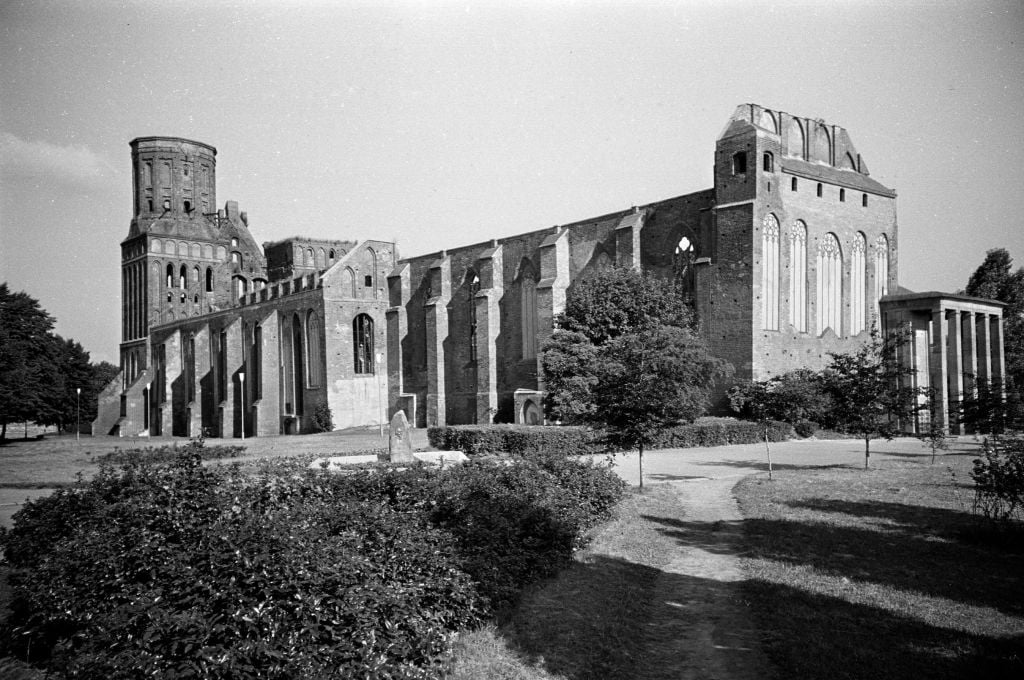
The burnt-out shell of the Cathedral after World War II
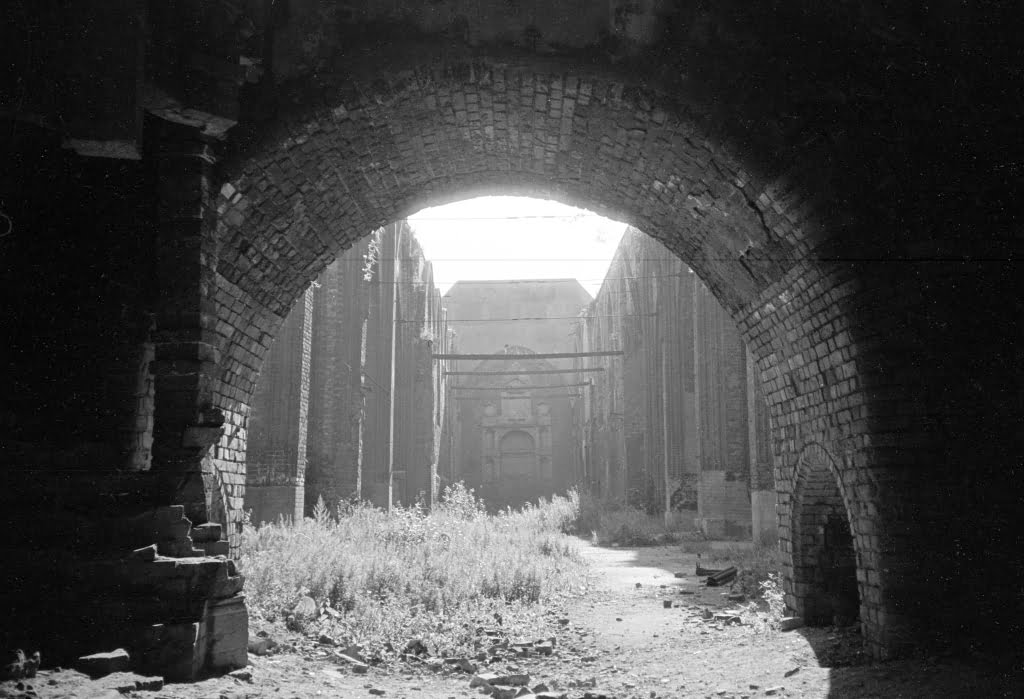
Interior of the ruined Cathedral.

Image of the altar in the pre-war years.
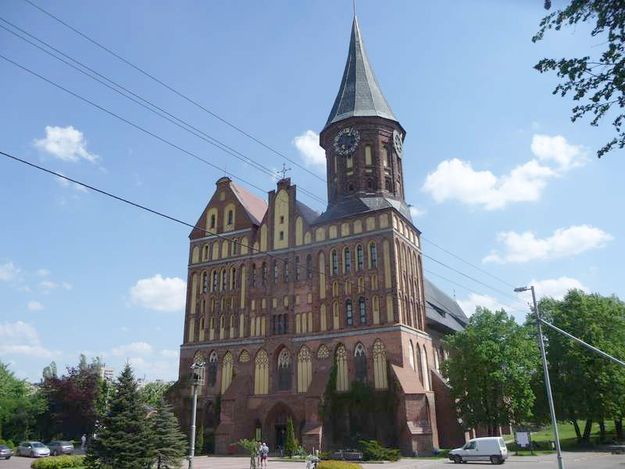
image source unknown
The reconstructed Cathedral after the 1990s.
4. St.Gervais Church, Falaise
If you are in Normandy, or anywhere in France, you will notice a lot of old churches, some from the 11th century and some even older. Falaise is an important town, one because William the Conqueror was born here, his castle overlooks the town, and second, because it was for a time the seat of the Dukes of Normandy, meaning Falaise not only has a long history but also carries with it a picturesque air specific of towns in Brittany and Normandy. This is partly due to the many old, sometimes medieval buildings, like houses and especially churches. St. Gervais was built during the 11th century and is as old as the town. It was built by William the Conqueror and finished by his son Henry, it was rebuilt after a siege in 1204 in the Gothic style and remained so until the summer of 1944. The building is a classic Gothic church, this is visible through the decorations on the entrance portals and the extensive use of vaulted arches. An example of the early Gothic and mid-phase, it is an important landmark that preserves the history of Normandy.
And so it came that during the end of August 1944, the German 7th army and other elements of Army Group B were in full retreat in the aftermath of Operation Cobra and the failure of the counterattack in Operation Luttich. The entire army was in danger of being encircled in the area between Trun, Chambois, Argentan, and Falaise, a dangerous situation that would lead to the collapse of the entire German Army in France. Paul Hausser commanded the 7th army and was desperately trying to keep the pocket open so that as many troops as possible could escape towards the Seine in hopes of establishing a new defensive line there or further east. The British and Canadian forces were closing in from the north after Caen fell while American and Polish forces were pressing from the south and west. In the event a series of desperate battles were fought for Trun Chanbois, Argentan, and of course, Falaise. After several counterattacks by the Germans, air strikes, and attacks by the Allies the town was ruined and the church was severely damaged during the intense fighting. Fortunately, the church had a sturdy structure with thick stone walls, the masonry held fast and even if the windows were blasted the structure withstood the rounds of ammunition fired at it. Except for the bell tower, most of the building structure was left in standing.
The building was successfully restored during the following decades so that this fabulous monument of gothic architecture would endure for generations to come.
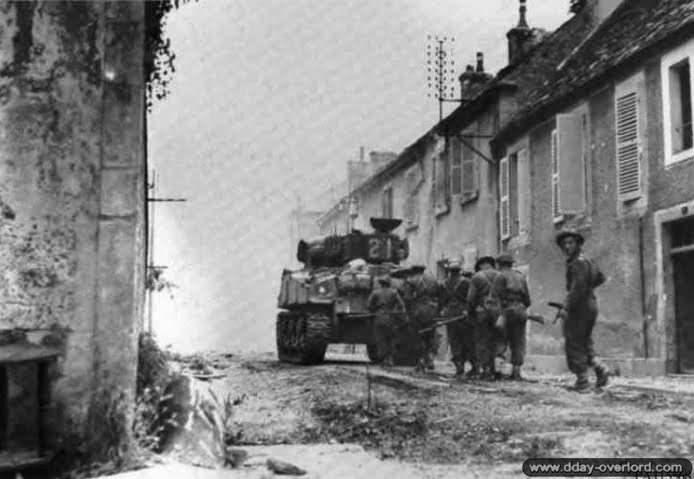
image via dday-overlord.com
Streets of Falaise during the fighting.
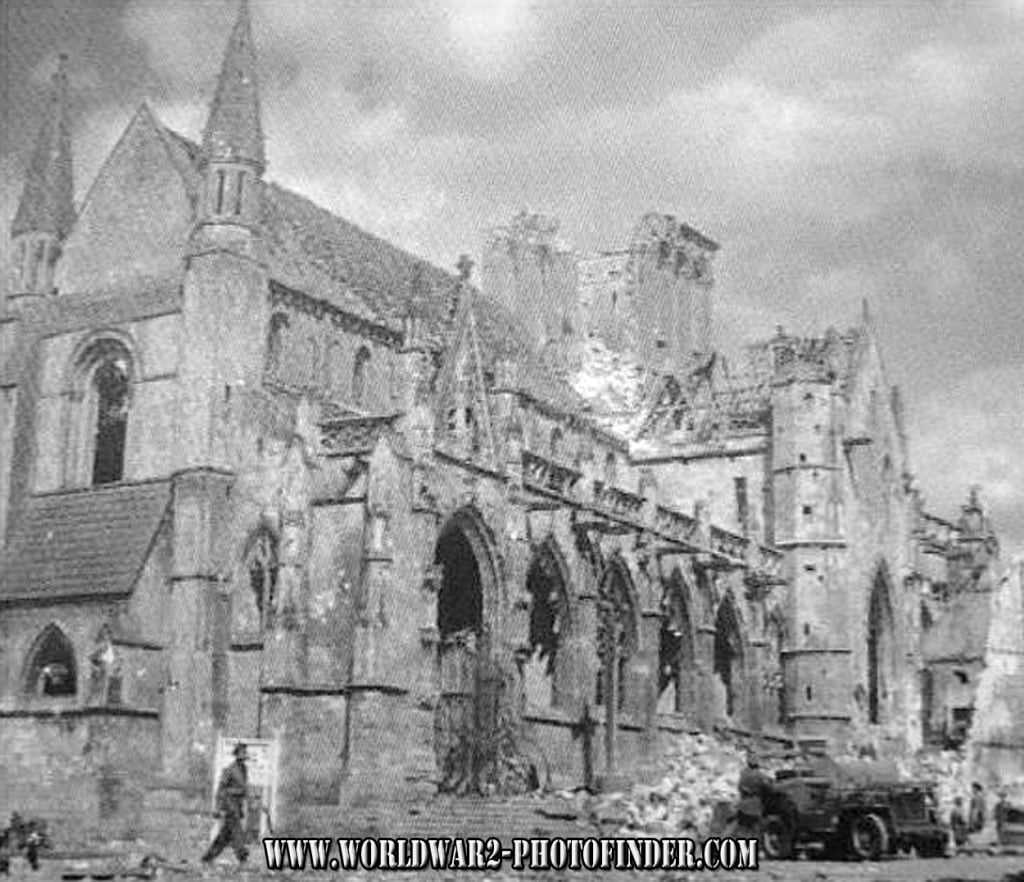
image via worldwar2-photofinder.com
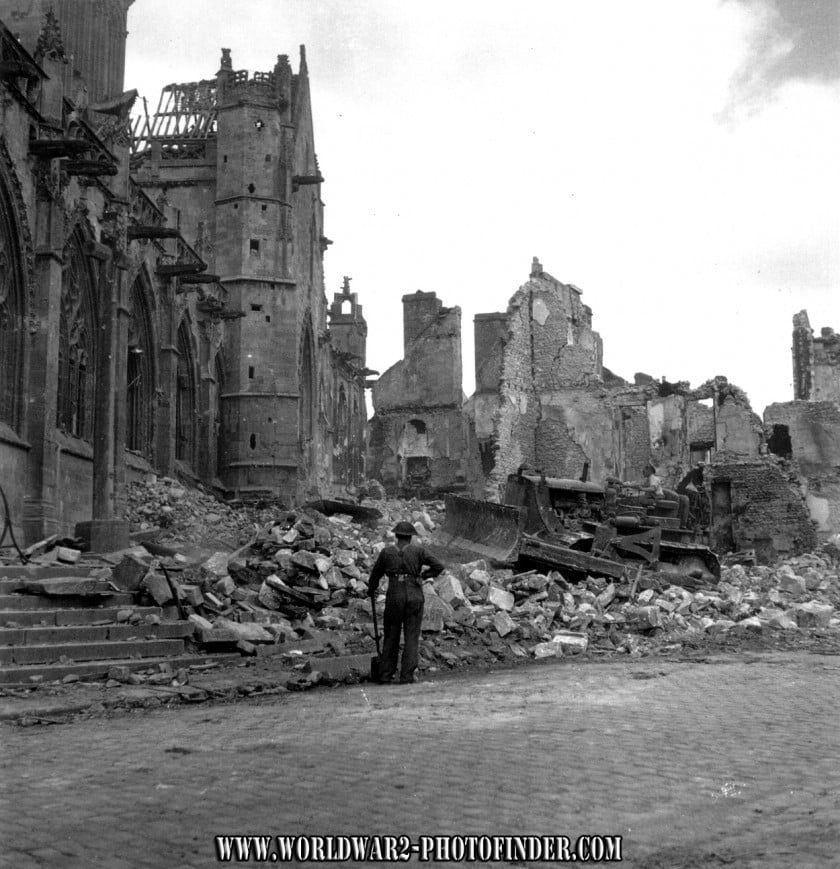
Image via worldwar2-photofinder.com
Images of the destroyed church after the fighting for the town ended.

Image via worldwar2-photofinder.com
The interior of the St. Gervais Church after combat stopped.

image via commons.wikimedia.org
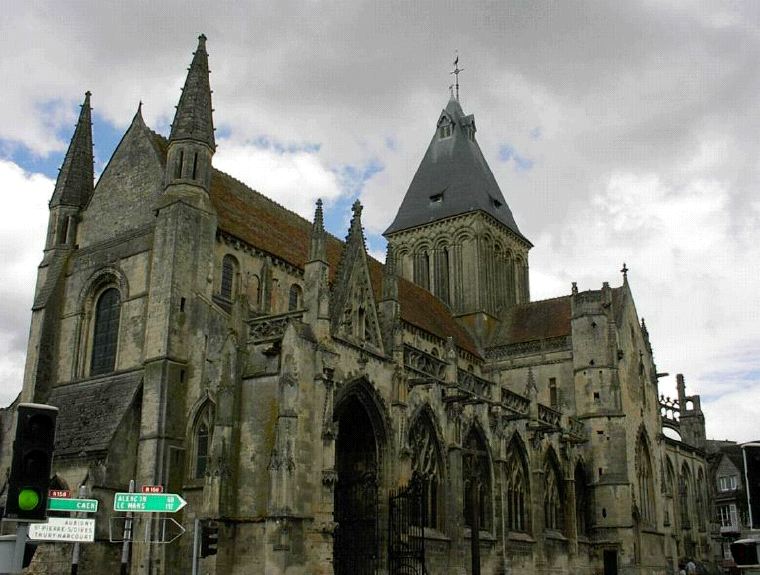
image via pastichesdumas.com
The current restored church in Falaise.
5. Royal Castle, Warsaw
Well, not only churches and cathedrals got the worst of it in WW2. Warsaw has a unique tragic story in World War two, and that says a lot if, among the many tragedies that were endured, this one stands out. The eastern front has probably the largest collection of cities that have been destroyed in a direct urban battle, some are well known like Stalingrad or Volvograd as it is known today, Leningrad or Sankt Petersburg, Brest, Minsk, Sevastopol and others are less known like Poznan, Konigsberg. Warsaw falls in the first category and is one of the few instances where the destruction was carried out deliberately, even after the battle ended.
The Royal Castle was a symbol of Polish monarchic power. Built in a fantastic Baroque style it marked the apex of Polish power and influence in eastern Europe. The Castle itself was built between 1568 and 1572 and was expanded throughout the 16th century, at first it had a Renaissance and then a Mannerist-early Baroque look. In 1619 the palace was renovated with an imposing early Baroque facade towards the town square. The early 17th century was a time of turmoil as the 30 years affected all countries bordering the German Roman Empire. The palace suffered some damage but nothing too serious and would continue to be the residence of the Polish kings for years to come withstanding the Russo-Polish conflicts and going unscathed through The Great Northern War when Swedish troops under Charles the XII besieged the town in 1704. The siege would do much damage to the town but the palace escaped again. From the 18th century on, the palace and city itself would survive through a number of conflicts triggered by the partitions of Poland between the neighboring powers, going through several rebellions, like the War of the Bar confederation, the rebellion of 1794, and into 19th century when the Polish sided with Napoleon in Napoleonic Wars, continuing with the November Uprising and January Uprising. The city was bombed during World War One but none of the previous conflicts could ever match the level of destruction brought on by World War Two.
The Palace received its first crippling blow when it was hit during the 1939 siege when it burned out almost completely. However it was still standing, its structure intact but it was left a hollow husk, plundered and decaying. Adolf Hitler decided to blow it up in 1940 but due to various reasons like the protest of the Italian government, it was left standing until 1944. The event which occurred in the summer and autumn of 1944 in Warsaw was one of the greatest tragedies of World War II. Having pushed the remnants of Army Group North and Army Group Central to the Vistula the Red Army paused for resupply on the eastern bank of the Vistula, right across from the city. In that moment the Polish partisans and members of the Armja Krajowa triggered an Uprising which brought them in control of several districts and severely hampered the German efforts to retake them. The German garrison of Warsaw was unprepared for the uprising and required significantly more forces to subdue the revolt. Having failed to fortify the city and faced with a rebellion, the loss of Warsaw seemed imminent. The Red Army however was either unable or unwilling to help, more the latter since the Polish nationalists were backed by the legal London-based government in exile and were not communists, so it made no serious attempt at crossing the Vistula and liberating the city. Such a move would have had dire consequences since it would mean that Poland might not have been part of Eastern Block in the post-war world.
The Germans caught on the act and knew the Russians would not help, believing that either their own counter-offensives stopped them or the Russians would not help the Polish nationalists. The commander of the Warsaw garrison was replaced by SS-Obergruppenfuhrer Erich von dem Bach-Zelewski, and his command received several attack groups bolstering his forces to some 23,000 well-armed and equipped troops. Some of these troops were special anti-partisan units like the attack group Dirlewanger and were renowned for their cruelty and the atrocities they committed throughout the Eastern Front. The fate of the Armia Krajowa was sealed, forgotten by the Allies, and left to face the Germans alone they would be defeated, but the city itself was not destroyed completely despite the fierce battle raging through its streets.
Since so many wars didn't destroy Warsaw and since it proved such a problematic city, with two major rebellions against the Third Reich, one time in 1943 and again in the summer of 1944, Adolf Hitler decided to wipe the city off the face of the earth. For the first time in history since Carthage, a city was being systematically demolished and destroyed. Carthage was leveled to the ground and then its earth was sowed with salt, and it was to be a similar fate for Warsaw. The palace was still up despite the constant battles in the city and bombing raids conducted by the Luftwaffe over the city, so it was finally demolished after it was wired to blow up, along with the rest of the houses and buildings in Warsaw.
After the war, the city was rebuilt and between the 1950s and 1971, the communist regime debated whether to rebuild the Royal Castle as well. The funds were made available by 1980 and the Baroque palace was reopened to the public with the interiors redone in 1984. As of 2010 the Castle was completely renovated and work will soon begin on the Castle Gardens right outside the palace.
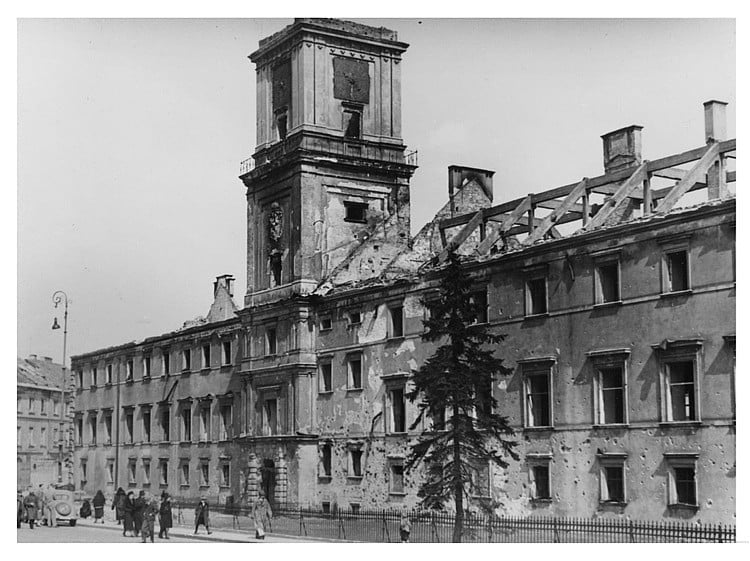
The Royal Castle in 1940 after the first year of war, was damaged and destroyed but still standing
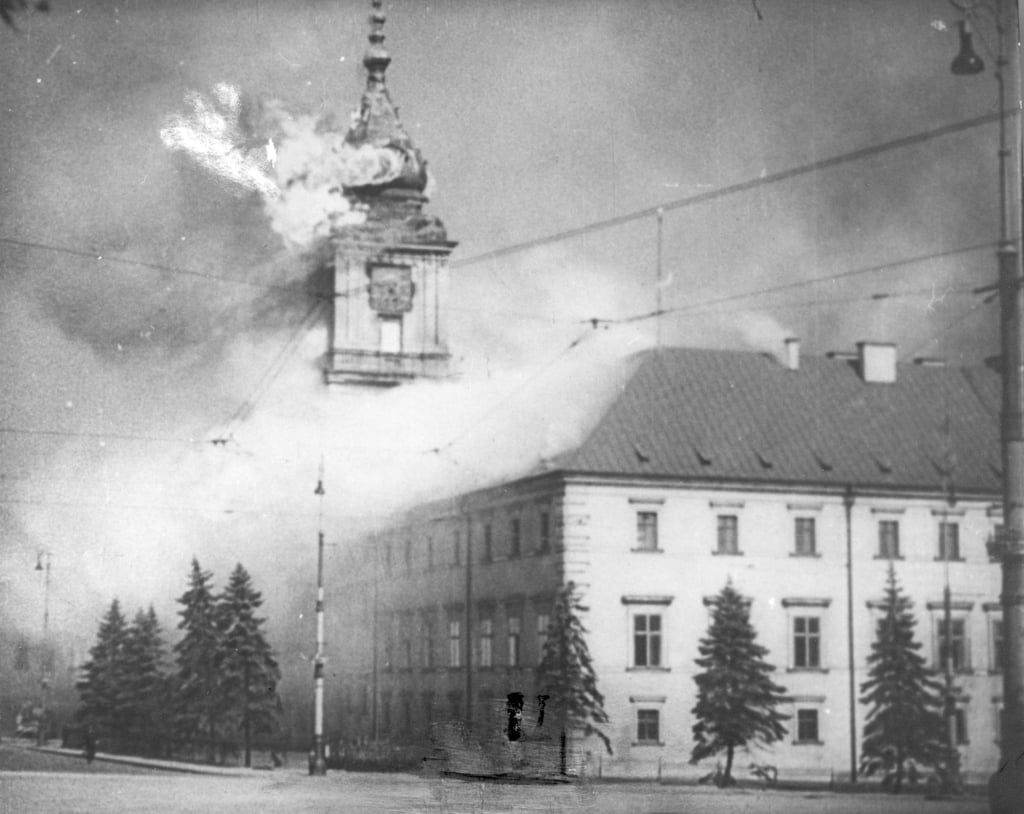
The Royal Castle burning after it was hit during the bombing of the city in the siege of 1939
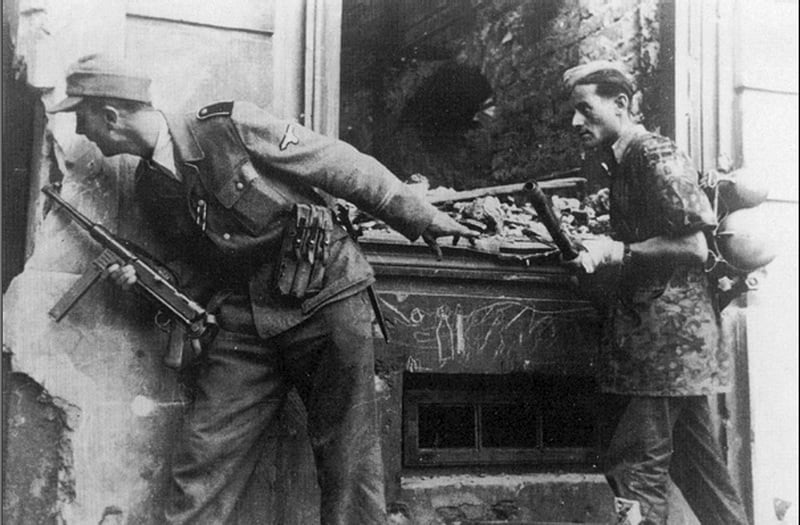 image via avidanofront.blogspot.ro
image via avidanofront.blogspot.ro
Germans used small search parties equipped with flamethrowers like the soldier on the right has.
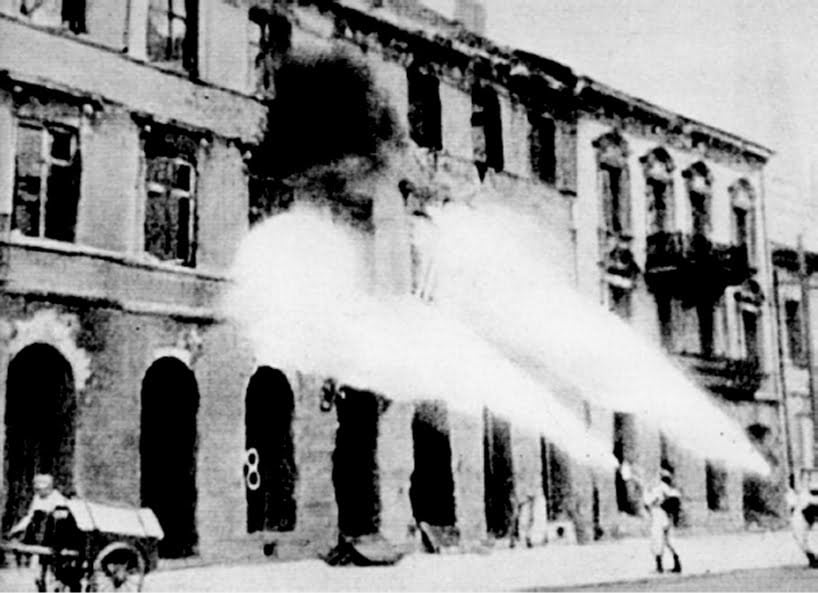
Not all buildings were demolished. The Germans used flamethrowers both during the battle and after the battle when demolishing a building with explosives and time-set charges was deemed to be time-consuming so fire was used to burn the inner structure made of wood like the wooden floors and wooden beams used in these houses which dated from 18th century and some being as old as the middle ages.

image via info-poland.buffalo.edu
The inner courtyard by 1940.
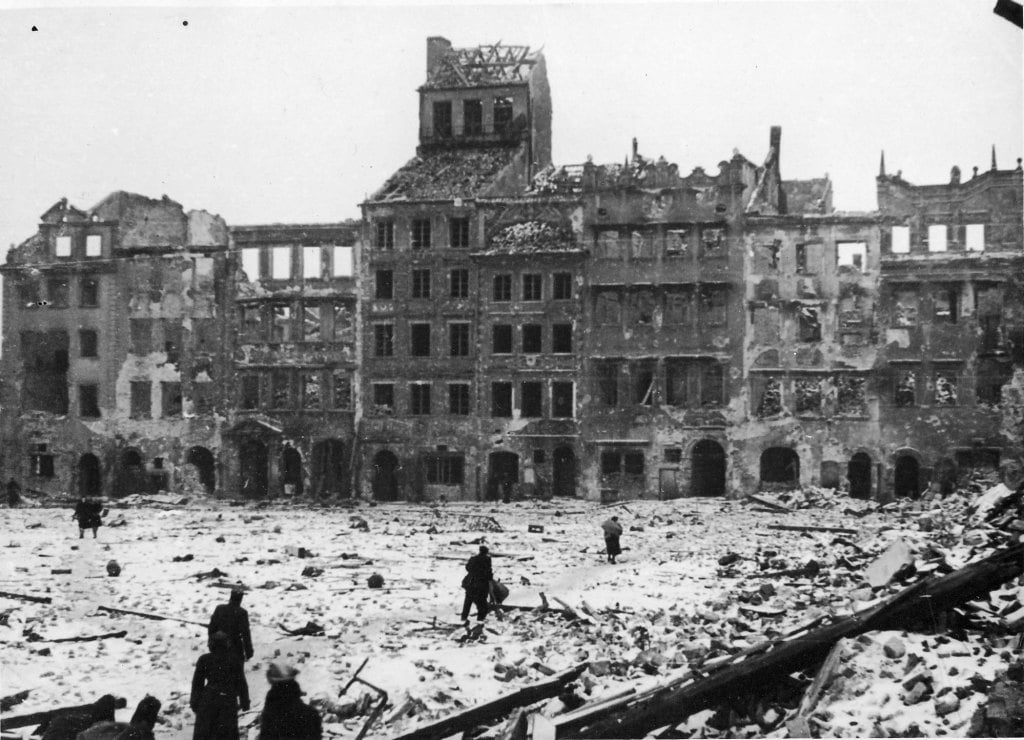
image via media.finnair.com
The city after the battle and the subsequent destruction.

image via info-poland.buffalo.edu
The Baroque Tower of the Castle burned in 1939.

image via info-poland.buffalo.edu
The scale of the destruction is visible in this aerial photo, the Royal Castle stood where the big pile of rubble is now in the middle of the picture. The destroyed barren husks were the houses facing toward the square, the gardens in the lower part of the picture have been completely destroyed.

Ju-87 bombs the old town of Warsaw, where the Royal Castle was also located. These attacks could not effectively destroy partisan forces and strong points but were used for morale-breaking and the destruction of the architecture and urban space of Warsaw.
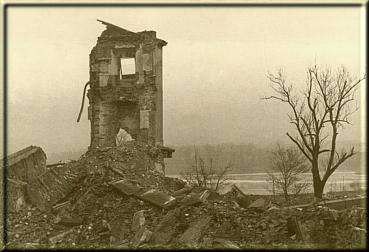
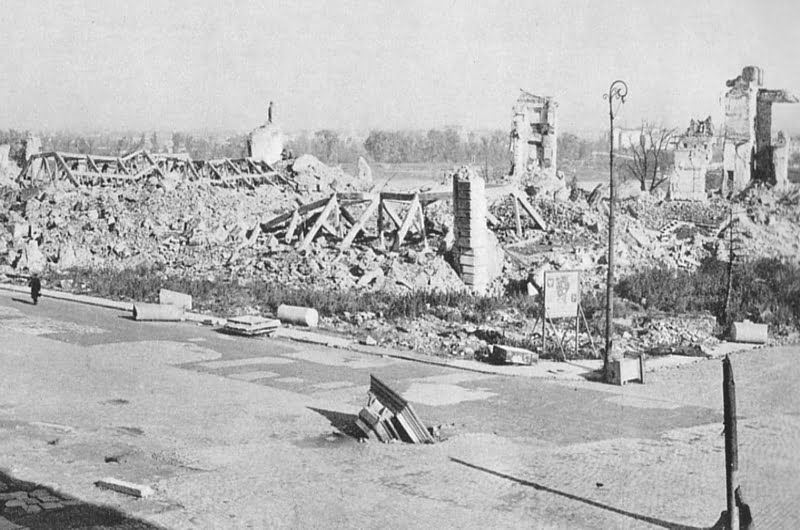
image via wikipedia.org
What was left of the Castle in 1945 after the battle and after the planned destruction of the city?
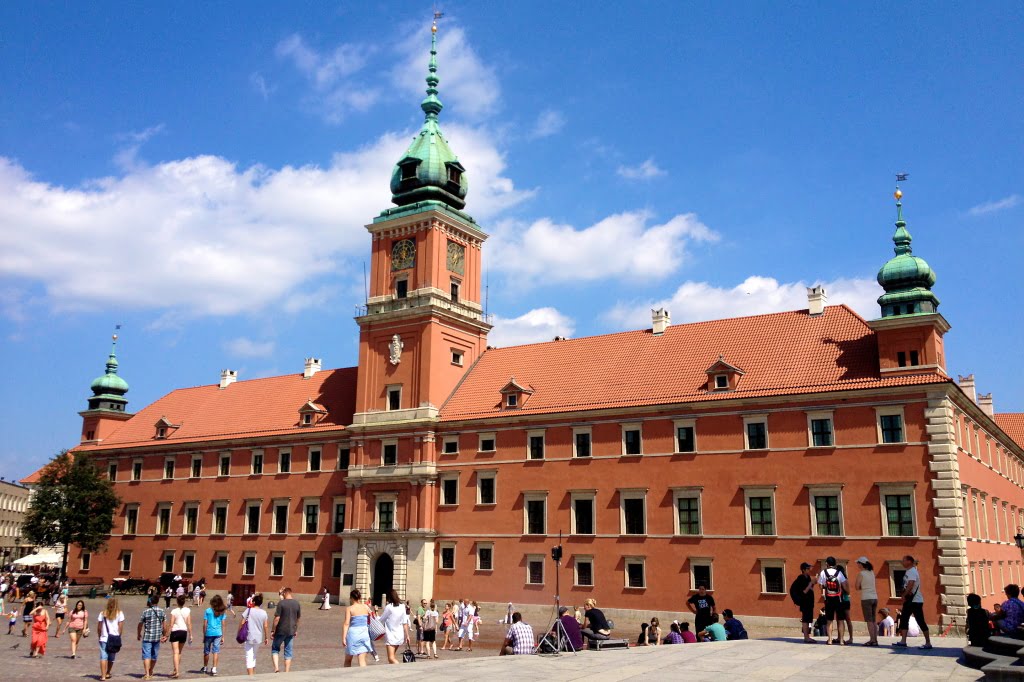
image via wwojnar.com
The Royal Castle rebuilt the mannerist facade towards the square.

The Royal Castle, Baroque facade towards the soon-to-be rebuilt Castle Gardens.
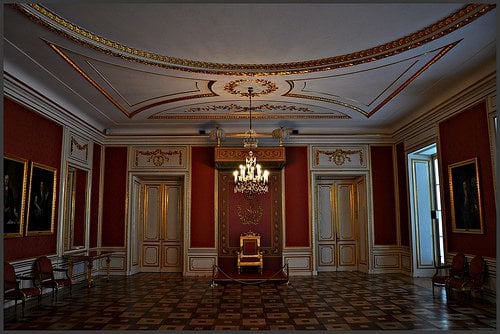
Image of the renovated interior.
We hope you enjoyed our selection, and remember that buildings and urban spaces carry with them interesting stories that endure in time.
Related Articles
45 of the Most Famous Buildings in the World With Unconventional Architectural Structure
